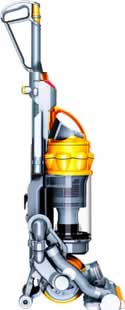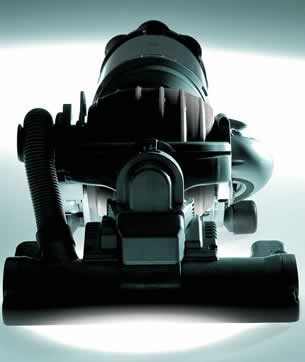Dyson Innovation Network Designs Top Selling Vacuum Cleaners
NX next generation digital product development software system allows designers to design in 3D in less time and consider multiple alternatives.
June 12, 2008
By DE Editors
 In 1993, Dyson founder, James Dyson, introduced the Dyson DCO1 Dual Cyclone, the first vacuum cleaner with constant suction. Over the following decade, Dyson has grown to become the top-selling vacuum cleaner manufacturer in Western Europe and the leading vendor of upright vacuums in the USA. It now employs 1,400 people in the UK and sells machines in 38 countries.
In 1993, Dyson founder, James Dyson, introduced the Dyson DCO1 Dual Cyclone, the first vacuum cleaner with constant suction. Over the following decade, Dyson has grown to become the top-selling vacuum cleaner manufacturer in Western Europe and the leading vendor of upright vacuums in the USA. It now employs 1,400 people in the UK and sells machines in 38 countries.
Since 1998, Dyson has been a committed user of the NX next-generation digital product development software system. From an original purchase of five seats of NX, Dyson now owns 88 licenses, with the software now being used by more than 100 in the Dyson R&D team. These users include: design engineers who are part of the New Product Development team, which generates ideas and concepts; scientists involved in testing and developing ideas and technologies; and the engineers responsible for the actual detail design of the machines.
Launched in 2005 was the Dyson DC15, an innovative approach utilizing the revolutionary Ball technology, which replaces the traditional, rigid wheels of a vacuum cleaner with a ball. This configuration makes maneuvering a vacuum around a room an easy experience as the user can guide the cleaner around furniture and other obstacles.
Like many companies, Dyson is faced with the challenge of continuing to provide increasingly sophisticated machines with more components, while ensuring shorter design and development cycle times.
After the concepts for the DC15 were carved out in cardboard and foam, design engineers produced detailed 3D models using NX to refine the ball mechanism and design. The modeling features within NX enabled Dyson’s design engineers to work with speed.
Rapid prototypes were then created in the next phase of the vacuum cleaner’s development, directly from designs created in NX. The resulting physical models were used for testing and evaluation. NX geometry was converted into STL files that were then used by Dyson’s in-house prototyping modeler, which creates prototypes from successive layers of powdered nylon.
NX’s integrated NC machining functionality, part of NX’s computer aided manufacturing (CAM) portfolio, was used for fast prototyping of metal components. Machining leveraged the 3D design geometry to drive milling and cutting tools. One of the advantages of using NX Machining was that refinements made to the design were automatically incorporated into the CNC programs, without the need for reprogramming. This avoided potentially costly delays to the creation of successive prototypes.
 Alternative designs could be considered using the variety of prototypes Dyson created. The speed at which NX could help deliver prototypes was a major benefit.
Alternative designs could be considered using the variety of prototypes Dyson created. The speed at which NX could help deliver prototypes was a major benefit.
A number of NX digital simulation and testing capabilities were used to improve accuracy and eliminate errors in the design, and ultimately speed the overall development cycle. NX’s assembly modeling functionality allowed Dyson to ensure that the many parts which were created by different design engineers, would fit together correctly within the product.
Further, NX mechanism analysis allowed the design engineers to view animated sequences simulating the precise motion of the moving parts. This ensured that parts did not interfere with each other as they moved. 3D design data was also used for finite element analysis (FEA) within NX by engineers to help them understand the stresses on the different parts within the DC15.
Flash (provided by Dyson)
After the major design and testing phase was completed, Dyson worked with specialist toolmakers at their purpose built assembly lines in Malaysia. It was important to provide the toolmakers with the information they need quickly and accurately to avoid delays. Toolmakers were able to access modeling data for the DC15 and, confident in its accuracy, employ it directly into their complex cutting tools.
Creating new innovations and designs is just part of what Dyson does. As time goes on, the company uses more sophisticated technology, yet development cycles do not grow longer. Using NX design technology in the process of producing detailed 3D models, performing digital simulations and creating rapid prototypes, development cycles are kept to less than three years. For more information on Dyson, visit Siemens.Subscribe to our FREE magazine, FREE email newsletters or both!
About the Author
DE’s editors contribute news and new product announcements to Digital Engineering.
Press releases may be sent to them via [email protected].






